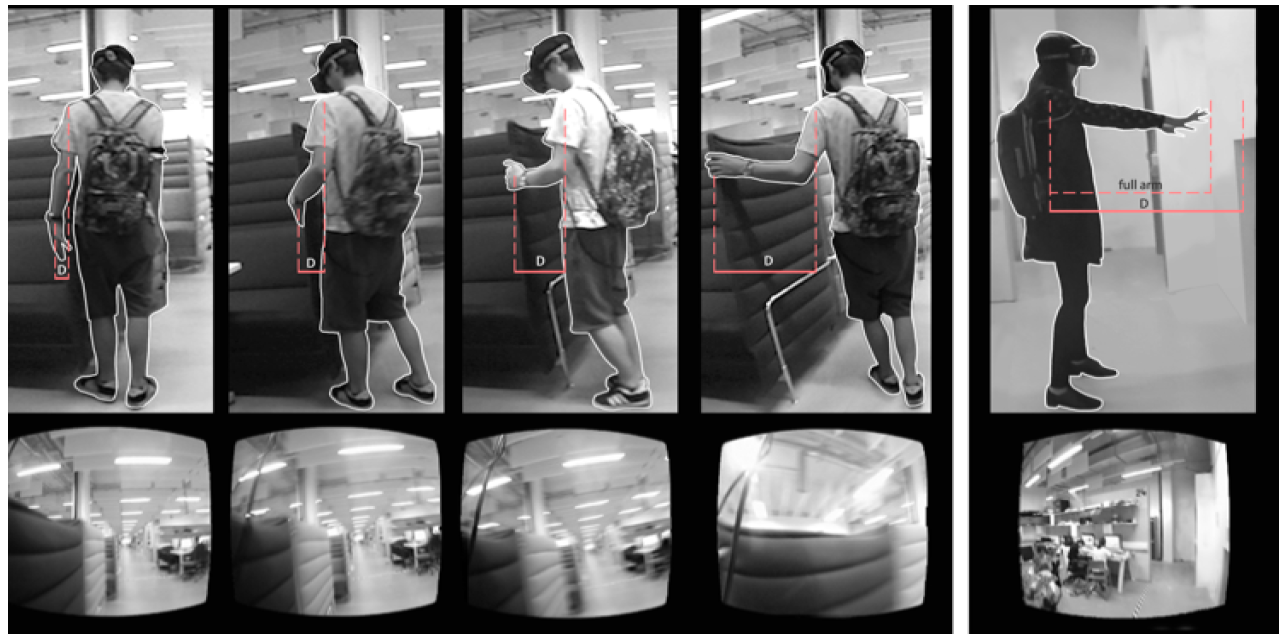Understanding the Relationship between Eye Position and Body Movement during Navigation with Unusual Visual Perception
Abstract
HCI research has addressed how to design tools that effectively alter human mind. Recent works have addressed relevant approaches such as the work Spider-Vision that modifies the visual sense [2] and the work addressing out-of-body experiences [3]. Here, we investigate the relationship between the body and its perception of the environment [4]. We ask: what if we change how and what we see by changing the eye position? How will the body navigate in space? We carried out a study which investigated how participants navigate through a complex building using a specifically designed device that interrupts the deep eye-body connections. The aim is to replace human eyes and make participants rely more on their bodily sensations in navigation. By placing the device on other locations in the body, the eye position was changed. Four eye positions were tested by participants with an average age of 25.
Keywords
Spatial information, Navigation strategies, Cognitive approaches.
Bibliography
- [1] Kirsh, D., 2013. Embodied cognition and the magical future of interaction design. ACM Trans. Comput.-Hum. Interact. 20, 1, 3.
- [2] Fan, K. & Huber, J. & Nanayakkara, S., Inami, M. 2014. SpiderVision: Extending the human field of view for augmented awareness. ACM International Conference Proceeding Series.
- [3] ThomasK.,BoldtR.,Hoppe,M.,Knierim,P.,Funk,M..2016. Exploring the Optimal Point of View in Third-Person Out-of- Body Experiences. In Proceedings of PETRA '16 ACM, USA.
- [4] Goldstein, B., 1981. The Ecology of L.L. Gibson’s’ Perception. Leonardo 14 (3). p. 191-195.
